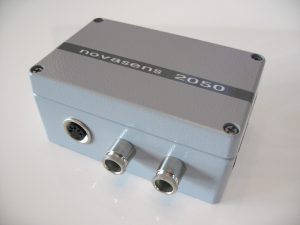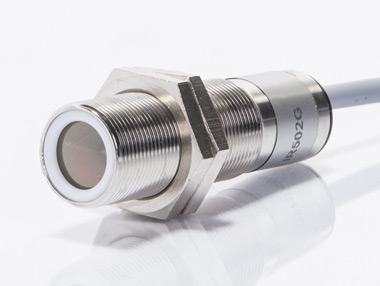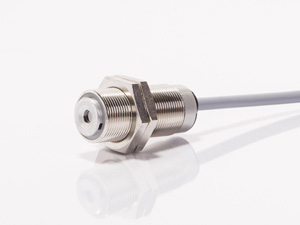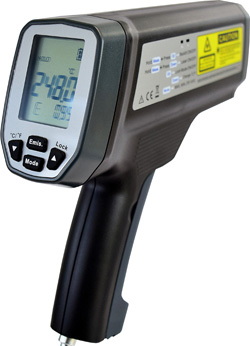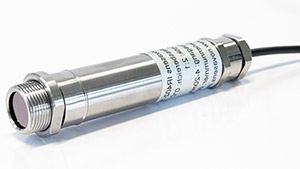Whether simple infrared temperature sensors for OEM applications, portable hand-held Thermometers or flexible and individually adaptable pyrometers and sensors: novasens offers you economical, robust and durable solutions in non-contact temperature measurement for your applications and production processes.
How to find the right pyrometer: Avoid bad purchases and prevent incorrect
measurement results.
With the help of this guide, you can select the pyrometers, infrared temperature measuring devices, infrared thermometers or infrared temperature sensors that are suitable for your application.
In order to select the right pyrometer, it is necessary to consider/answer the following
technical questions:
| 1. What do you want to measure? What material is your measurement object made of? This question is very important in order to select a pyrometer that measures in the correct spectral range. While pyrometers in the spectral range of 8-14μm are suitable for most non-metals, this spectral range is unsuitable for metals, for example, especially bare or polished metal surfaces. |
| Spectral range of the pyrometer | ||||
| Spectral-range | Application examples |
Stationary Pyrometers | Portable infrared thermometers | |
| 8 – 14µm | Food, paper, textiles, plastics, leather, tobacco, pharmaceuticals, chemicals, rubber, coal, asphalt and almost all non-metallic surfaces |
IR402 | 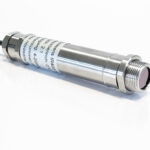 |
|
| novasens 2050 | 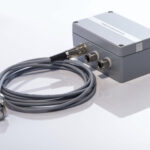 |
|||
| 2.3 – 5.0μm | Measurements during glass production, glass finishing and further processing, tempering and hardening processes, production of flat glass, car glass, glass bottles and solar cells |
HighTemp 520 | 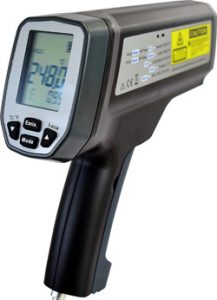 |
|
| 2.2μm | Measurement of shiny and polished metal surfaces in low temperature range, melting processes, steel melting, heat treatment/tempering, rolling processes, laser cutting processes, laser welding, welding processes, continuous casting, metal recycling, forming process, sintering process,die casting, steel rolling, soldering, monitoring of induction processes and induction heating |
IR702 | 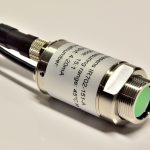 |
|
| 1.1 – 3.7μm | Iron and steel production, melting and casting processes, forging processes and metal finishing process, high-temperature chemical processes, thermoforming processes such as bending, rolling and cutting |
HighTemp 530 | 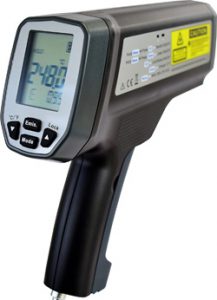 |
|
| 2. How high is the process temperature of the measured object? If the process temperature of your measured object is 170°C, for example, select the temperature measuring range 0-250°C for the pyrometer. |
| Temperature measuring ranges |
Designation | |
| -20°C to 100°C 0–250°C |
IR402 |  |
| -40°C to +60°C, 0-30°C, 0-50°C, 0-100°C, 0-250°C, 0-500°C, |
novasens 2050 |  |
| +100°C to +1800°C
|
HighTemp 520 |  |
| 45°C-300°C, 250°C-1000°C, 450°C-2000°C | IR702 |  |
| +200°C to +2400°C
|
HighTemp 530 |  |
| 3. What response time/reaction time should the pyrometer have? This value is important if you want to measure a very fast-moving object, such as a conveyor belt. |
| 4. How high is the ambient temperature around the sensor head? For higher ambient temperatures, we recommend the use of a heat sink or the option of air cooling/lens cleaning with compressed air to increase the measuring accuracy of the pyrometer and the longevity of the sensor electronics. Is the ambient air around the pyrometer lens contaminated with dirt/dust particles? Select the air cooling/lens cleaning with compressed air option or an air purge attachment as an option for the sensor. |
| Connection for air cooling/lens cleaning with compressed air |
Water cooling body and air purge attachment |
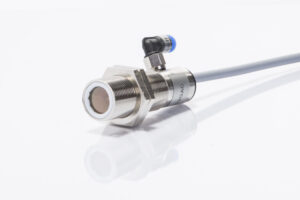 |
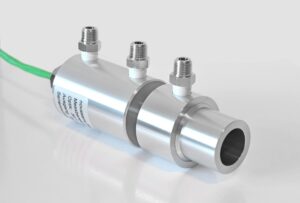 |
| 5. Which output signal do you need for integration into your application? 4-20mA, 0-20mA, 0-10V, Thermoelement Typ-K oder ModBus RTU? |
 |
 |
 |
 |
 |
 |
| 6. How to select the right sensor optics: |
| Pyrometers and sensors are available in various optical resolutions. The optical parameters are specified as D:S ratio (Distance to Spot Size). A 15:1 ratio has a measuring spot diameter of 25.2mm at a measuring distance of 200mm (200mm/15=13.33mm + 11.9mm lens diameter = 25.2mm). 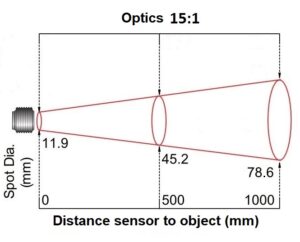 If your measurement object is <25mm, place the sensor in the machine at a distance of up to 200mm. To select the correct optical resolution, consider the following parameters: • How large is the measuring distance between the pyrometer and the measured object? • Is it still variable or already fixed? • What size/dimensions does your measurement object have? To ensure correct temperature measurement, the measurement object must always completely fill the measurement spot. |
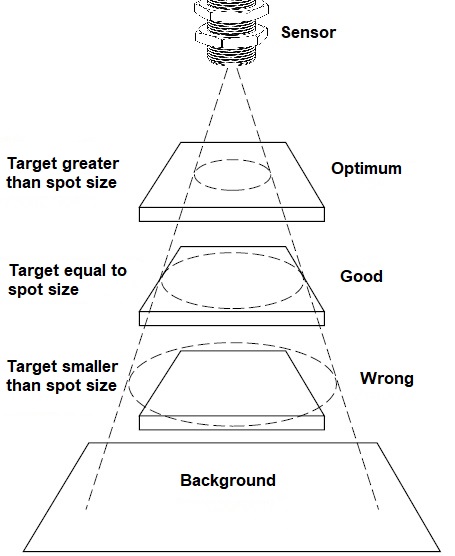
Thanks to the flexible modular system and a large number of selectable infrared temperature sensors, you can configure the novasens 2050 individually for your application… more
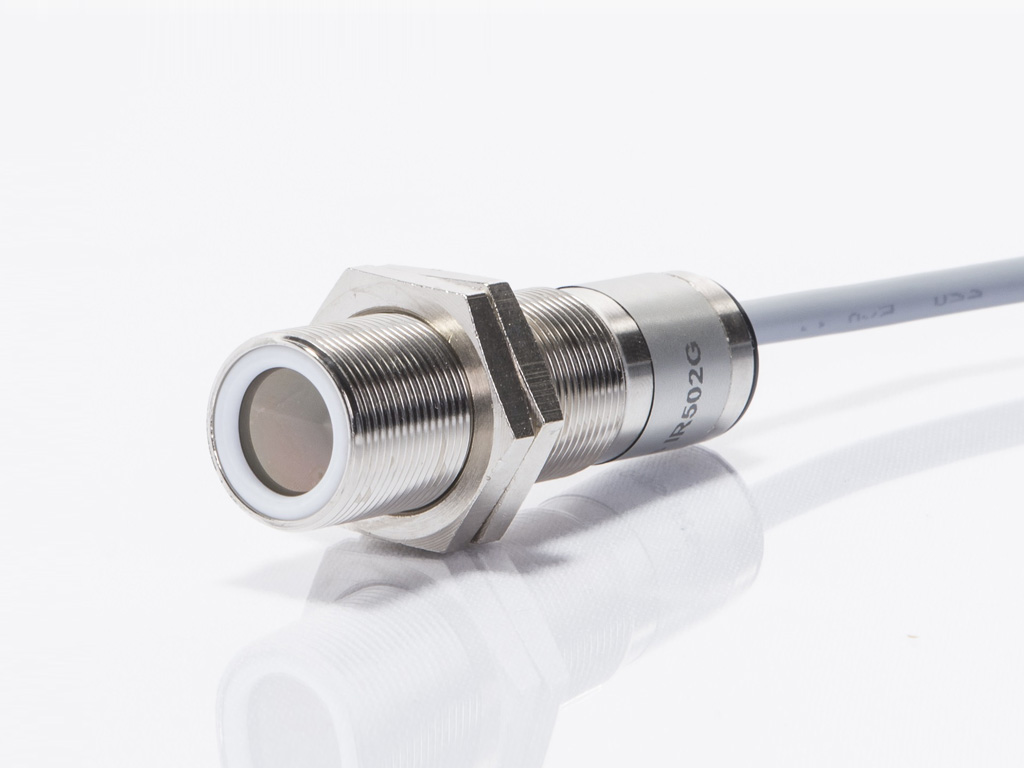
Extremely precise sensor with Germanium optics for the detection of small measuring spots over long measuring distances…more
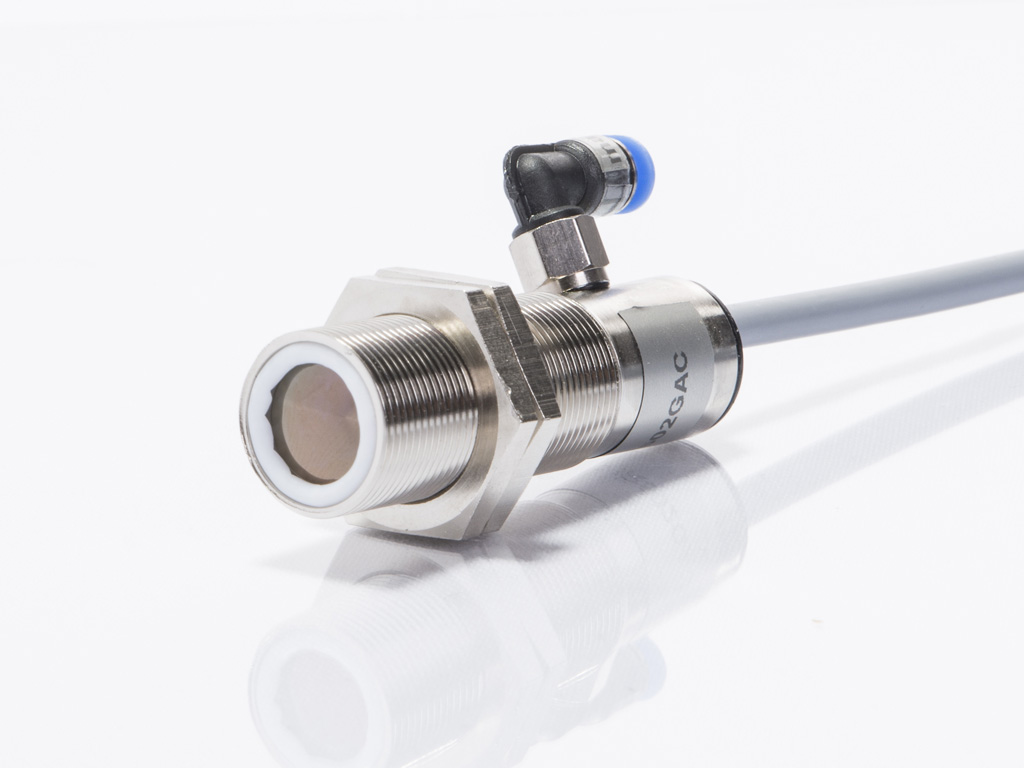
Robust sensor with air cooling / lens cleaning by compressed air for use in very hot or dirty environments…more
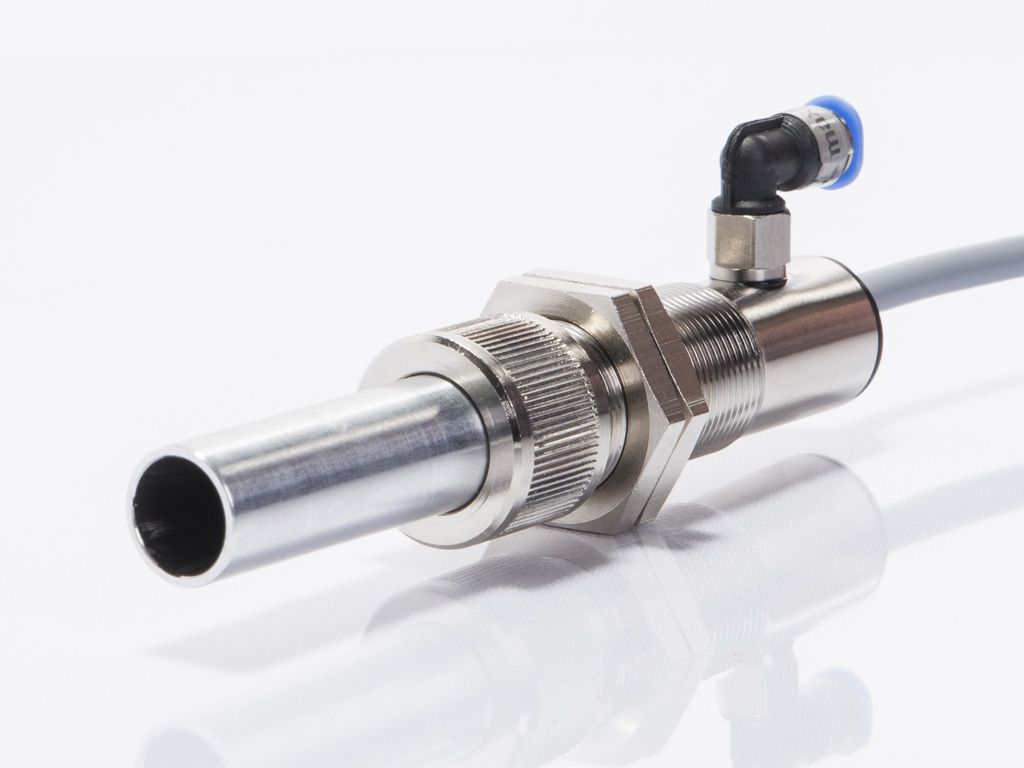
Data like IR502GAC with additional 40 mm pipe against pollution and interference radiation…more
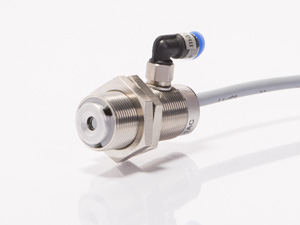
Tough, small sensor with air cooling / lens cleaning by compressed air for temperature measuring of large surfaces and objects…more
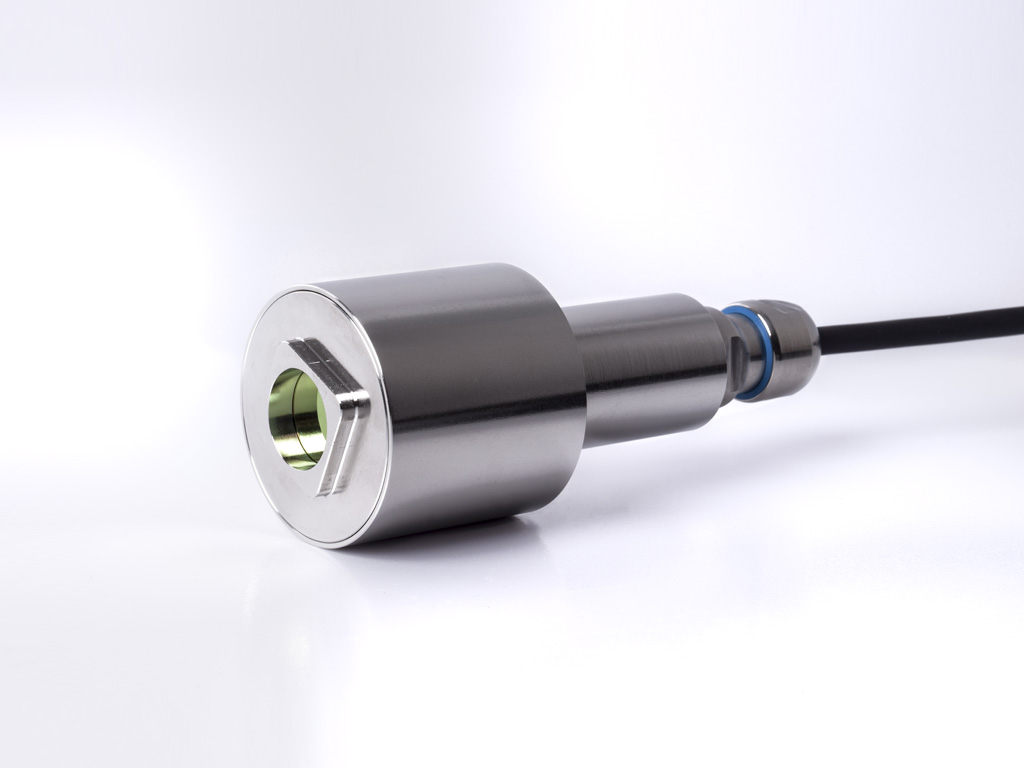
Extremely strong sensor with IP69K protection for use in food production and petrochemicals…more
Portable Infrared Thermometer for non-contact temperature measuring
Portable infrared thermometer for non-contact temperature measurement of glass surfaces…more
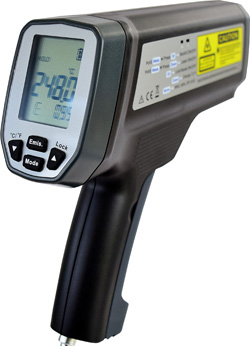
Portable infrared thermometer for non-contact temperature measurement of metal surfaces…more
applications…more





















